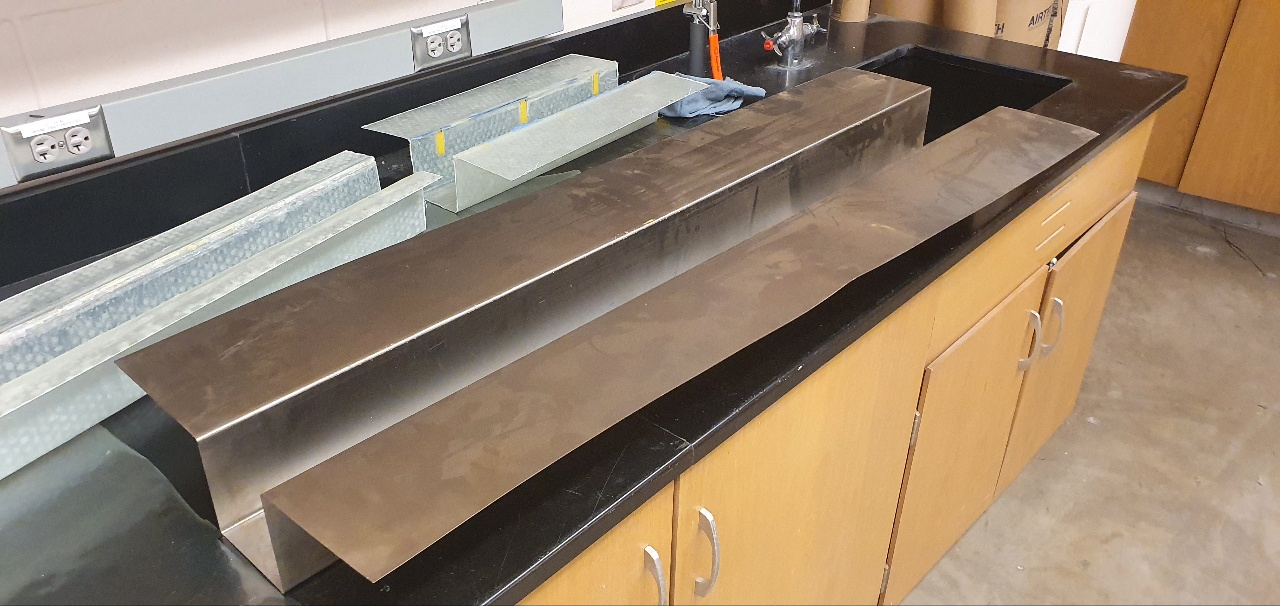Initial Plan
Rails
The initial plan was to use 4 x 4 lumber to create the glass fiber/epoxy rail mold. The lumber was prepared by trimming it toe dimensions and applying epoxy coat on the surface. The glass fiber was wet out with epoxy and hand-laid over the prepared lumber.
But the lumber twisted in our stroage environment and planing the twisted part chagned the design dimensions. The epoxy coat applied to the surface of the lumber was absorbed and the coat surface was uneven. The created mold had resin scarcity in the corners and did not match the design dimensions.
Steps
The plan was to use two-part mold by by routing the texture into polypropylene bars. Epoxy and PLA were applied to the surface of the PP bars. The foam-core sandwich panel was hand-laid with the textured PP bar on the top.
But the coated textures did not have even surfaces. Epoxy and PLA coat was not enough to prevent the PP bar from bonding to the created part. The PP bar also created resin pool along the edges.
Rail Mold

Sheet metal was bent to desired dimensions to create the mold.
Step Mold
The final step tooling came out as a four-part mold made of maple and oak lumber coated with exterior polyurethane wood coating. Select grade hardwoods were used to ensure the boards were square and straight before fabrication. As a team we had experienced issues with common lumber warping in long sections, making dimensional tolerances hard to control. The hardwood mitigated these issues.
The use of a mold guaranteed a consistent step-width and edge angles. Step width needed to be held to a tight tolerance to ensure even bond line thicknesses during the assembly process and reliable edge angles were needed make each step level with the ground and other steps at the recommended angle of operation, 75 degrees. The mold also featured trenches on the base layer to incorporate glass fiber rods into the layup. These rods were utilized to create anti-slip ridges onto the step, which was an important regulatory requirement from OSHA and ANSI Ladder standards.
